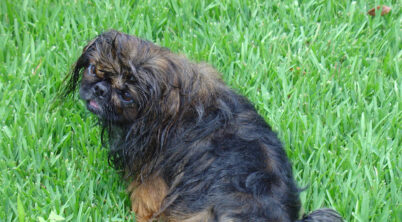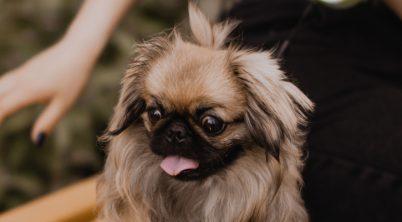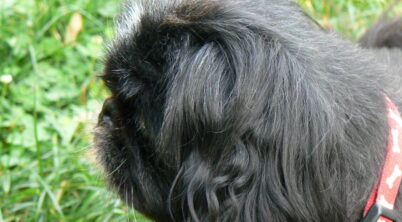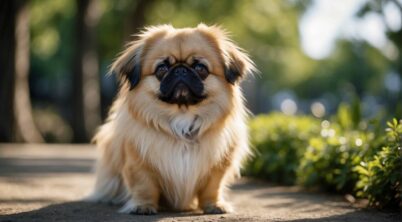A feeding chart serves as an essential tool for Pekingese owners, providing a structured dietary guideline tailored to the unique nutritional needs of this toy breed. Pekingese dogs, with their distinctive lion-like mane and compact size, have specific dietary requirements that differ from larger breeds. Their slower metabolism and propensity for obesity make it crucial to adhere to a proper feeding schedule and quantity.
Proper nutrition is paramount for the health and longevity of a Pekingese. A balanced diet must include high-quality animal-based proteins, carbohydrates, fats, vitamins, and minerals to support their daily energy needs and maintain their lavish coat. The feeding chart for a Pekingese typically outlines the recommended amount of food based on age, weight, and activity level, indicating adjustments to avoid underfeeding or overfeeding.
Feeding frequency is also a vital aspect of a Pekingese’s diet, generally involving multiple small meals per day for optimal digestion. Adult Pekingese may thrive on two meals per day, whereas puppies, with their rapid growth and higher energy demands, may require more frequent feedings. A carefully crafted feeding chart not only promotes a healthy weight but also ensures the overall well-being of these regal canines.
Table of Contents
Understanding Pekingese Dietary Needs
Pekingese have specific dietary needs that vary with their size, age, and growth stage. This section covers the essential aspects of nutritional needs and life stage considerations to maintain their health and vitality.
Nutritional Requirements
The Pekingese requires a diet rich in proteins, fats, and carbohydrates to meet their energy needs. Proteins are crucial for muscle maintenance and growth, while fats provide energy and support cell function. Carbohydrates are necessary for sustained energy levels throughout the day. A balance of these macronutrients is vital, along with essential minerals and vitamins to support overall health. Minerals like calcium and phosphorus aid in bone development, and vitamins are necessary for various metabolic functions.
Life Stage Considerations
Puppy: Pekingese puppies experience rapid growth and require meals that are high in proteins and calories to fuel their development. Puppy food should support their growth without causing excessive weight gain that could lead to health problems.
Adult: As they reach adulthood, the nutritional focus for Pekingese shifts to maintenance. Their diet should be formulated to keep them at an ideal body weight, preventing obesity but also ensuring they are not underweight. Adult Pekingese have reduced energy requirements compared to puppies.
Senior: The caloric needs of a Pekingese may decrease even further as they age. Senior dogs often have lower metabolism and may not lead as active a lifestyle. Adjustments to their diet should prevent weight gain and support joint health, accommodating any onset of age-related issues.
Choosing the Right Food
When selecting the ideal diet for a Pekingese, the focus should be on balancing high-quality proteins with other necessary nutrients, accommodating the small breed’s specific needs.
Wet vs. Dry Food
A dog’s preference often plays a role in choosing wet or dry food. Wet food can be more palatable and hydrating, but it’s also less calorie-dense, making portion control essential to prevent weight gain. On the other hand, dry food is convenient for many pet owners and helps with dental health by reducing tartar buildup. High-quality dry dog food that is specifically formulated for small breeds provides balanced nutrition tailored to their metabolic needs.
Kibble Size and Type
The kibble size should be small enough to fit the Pekingese’s mouth comfortably to encourage proper chewing and digestion. Small breed-specific kibble is designed to provide the right balance of nutrients while also being an appropriate size and texture. Look for dry foods with high-quality proteins as the first ingredient and devoid of artificial additives.
Natural and Hypoallergenic Options
For Pekingese with sensitive stomachs, natural and hypoallergenic options are available that avoid common allergens like corn, wheat, and soy. These foods often contain novel proteins and easily digestible carbohydrates like sweet potatoes. Natural dog food tends to have a shorter ingredient list, emphasizing whole foods such as meat, bones, and vegetables.
Feeding Guidelines and Chart
Proper feeding of a Pekingese is crucial to maintain their health, accounting for their age, weight, and the risk of obesity. Balancing the amount of food with the correct frequency helps prevent overfeeding.
By Age
Pekingese puppies require a different feeding regime compared to adults due to their growth needs. Puppies under six months should be fed approximately 0.4 cups of food daily, divided into three meals to support their development. As they progress to 6 to 7 weeks of age, the frequency can be the same, but the quantity increases slightly to about ¾ cups divided across three to four meals.
For adult Pekingese, a general guideline is 0.75 cups of food daily, which equates to roughly 400 calories, split into two meals to prevent overweight and obesity issues.
By Weight
A Pekingese’s weight also influences the appropriate food quantity. For a Pekingese weighing between 3KG to 6KG, the feeding amount may range from 60g to 120g per day. To maintain a healthy weight, owners must adjust the portions according to activity levels. One should always measure the food accurately to avoid the tendency of overfeeding which leads to an overweight pet.
| Weight of Pekingese | Daily Feeding Amount | Feeding Frequency |
|---|---|---|
| 3KG | 60g | 2-3 times/day |
| 6KG | 120g | 2-3 times/day |
Adhering to these guidelines ensures the overall well-being of a Pekingese by providing tailored feeding schedules suitable for different stages of their life.
Common Health Considerations
Feeding a Pekingese requires attention to their unique health needs. Proper nutrition and feeding habits can mitigate risks associated with weight, dental, and digestive health concerns.https://www.youtube.com/embed/dcHr0BBF6lQ
Weight Management and Obesity
Feeding schedules and portion control are essential in preventing obesity in Pekingese. They have a tendency to gain weight if overfed, which can lead to other health problems such as joint stress and heart issues. Owners should measure daily food intake carefully and limit treats to maintain a healthy weight.
- Recommended daily food intake for adult Pekingese: 1/2 to 1 cup of dry food
- Treats: Should not exceed 10% of their daily calorie intake
Dental Health
Pekingese can suffer from dental health issues without proper care. Regular dental check-ups and cleanings prevent the buildup of plaque which can lead to tooth decay and gum disease. Providing chew toys and dental treats can help maintain good dental health.
- Preventative measures: Dental check-ups, cleaning routines, and safe chew toys.
Digestive Issues
Sensitive digestive systems in Pekingese may lead to various stomach issues. Owners should select a diet that is easy to digest and monitor their Pekingese for signs of allergies or intolerance. Overfeeding can exacerbate digestive troubles, including bloat, which is a serious condition that requires immediate veterinary care.
- Diet choice: High-quality, easily digestible food with proper fiber content
- Common signs of digestive distress: Vomiting, diarrhea, loss of appetite
Feeding the right diet and monitoring for these common health issues will assist in keeping a Pekingese healthy and happy.
Special Care and Feeding Practices
In managing the well-being of a Pekingese, tailoring their diet to their physical activity level and health conditions is crucial. A Pekingese requires attentive care that considers their unique physiological and health challenges.
Physical Activity and Feeding
Pekingese dogs, known for their less active nature, do not require large quantities of food. Their level of physical activity has a direct impact on their dietary needs. An active Pekingese may need more food compared to a less active one, but overfeeding should be avoided due to risks of joint and breathing problems, exacerbated by obesity. Offering a measured diet that complements their activity level is essential. They are prone to weight gain, which can strain their fragile joints and exacerbate potential breathing problems.
Here is a simple guideline that aligns feeding practices with activity levels:
- Low Active Dogs: ½ cup of high-quality dry food per day, divided into two meals.
- Moderately Active Dogs: Up to ¾ cup of high-quality dry food per day, divided into two meals.
- Highly Active Dogs: 1 cup of high-quality dry food per day, divided into two meals.
Maintain consistent grooming and brushing routines, as these practices not only contribute to their overall health but can also affect their feeding. Shedding can be influenced by nutrition, and a well-balanced diet supports a healthy coat.
Feeding During Health Conditions
When a Pekingese faces health issues such as arthritis, progressive retinal atrophy, corneal ulcer, or dry eye, dietary adjustments can play a supportive role. Incorporate foods with anti-inflammatory properties to aid with arthritis and supplements that support eye health. Monitor for symptoms and adjust their diet accordingly, consulting with a veterinarian for tailored advice.
For Pekingese that are spayed or neutered, their metabolic rate may decrease, necessitating a lower calorie intake to prevent weight gain. Special dietary formulations or a reduction in portion size can help manage their weight and health effectively.
It’s imperative to consider these factors for a Pekingese’s diet to ensure their longevity and quality of life.
* Banner photo by ludoviς, cropped | Some rights reserved








